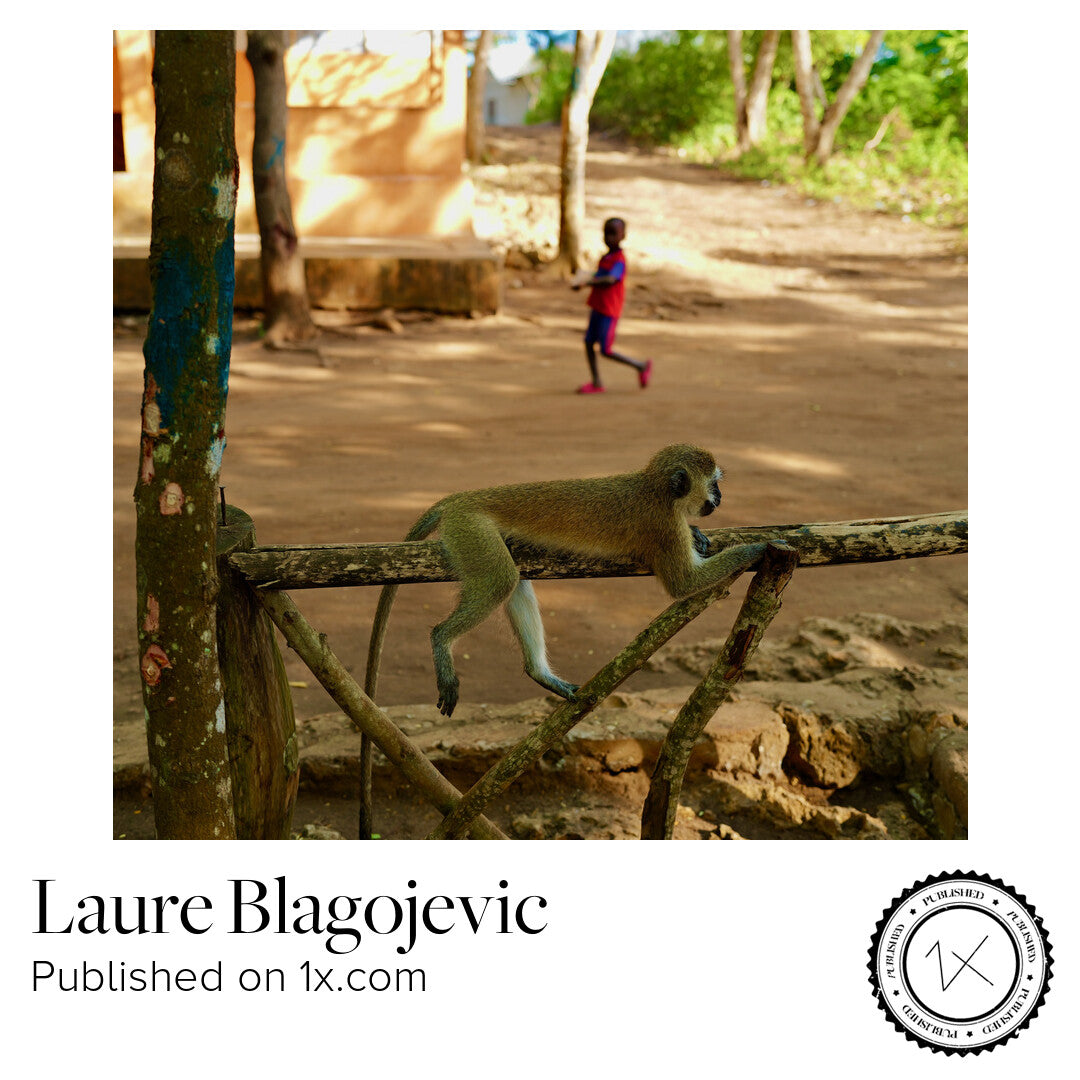
Mimetic cohabitation
Share
In a village in Zanzibar, a vervet monkey stretches nonchalantly on a wooden fence. In the background, a child strides across the scene. The first doesn't move, the second doesn't see him. Yet, between the two, a silent dialogue takes place.
The photograph, selected by the curatorial platform 1X.com , focuses on this moment of discreet overlapping between two worlds - that of the local fauna and that of the inhabitants - brought together without spectacle, without staging.
Mimicry of postures, echo of presences
The framing deliberately leaves room for the environment: painted trees, dusty ground, handmade wooden structure. In the center, the reclining monkey adopts a surprisingly familiar posture: relaxed arms, sidelong gaze, dangling legs. More than a moment of animal observation, the image is part of a mimetic relationship between humans and animals, often perceptible in rural areas where proximity is a daily occurrence.
This proximity generates common gestures. Here, the animal seems to adopt a human attitude , while the child, in blurred movement, embodies the urban vitality of an African village in full evolution.
A documentary reading without stylistic effects
Photography is based on a documentary balance: no element is forced, no subject is isolated. Reality is captured as it presents itself, with its fortuitous intersections, its natural compositions, its unspoken interactions.
The choice not to refocus the image on a single subject allows for the revelation of a system of cohabitation : between generations, between species, between visible gestures and eclipsed presences. Mimicry here becomes a visual language, where the image echoes scenes observable in many regions of East Africa.
Local context: between forest and everyday life
In Zanzibar, vervet monkeys live in close proximity to local residents, particularly in the outlying forested areas. Neither threatened nor truly domesticated, they roam freely, taking the same paths, skirting the same walls, and settling into the same shady nooks. This familiarity creates scenes of crossover where humans and animals share space without necessarily interacting.

